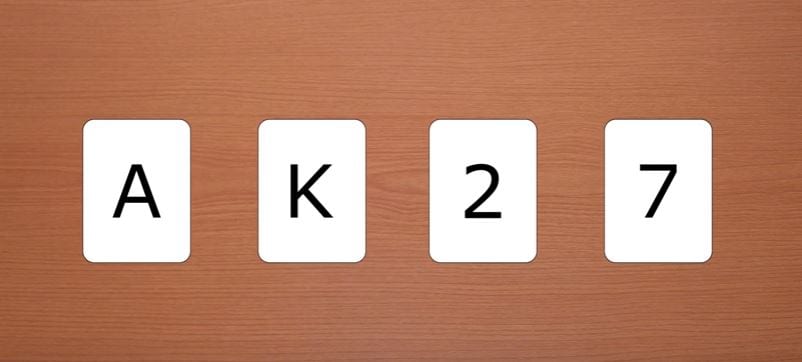The folks over at the YouTube channel WonderWhy have stumbled upon some 50-year old research that still packs a powerful punch today when it comes to determining one’s ability to use deductive reasoning.
It’s a super-simple test invented in 1966 by cognitive psychologist Peter Cathcart Wason. And, this dude dedicated his life to the psychology of reasoning, and his theories diverged from what was then ‘standard’ psychology.
He started with the ideas that humans are unable to reason.
That’s right.
And, as such, since so much of life is inconsistent, one cannot apply reason anyhow.
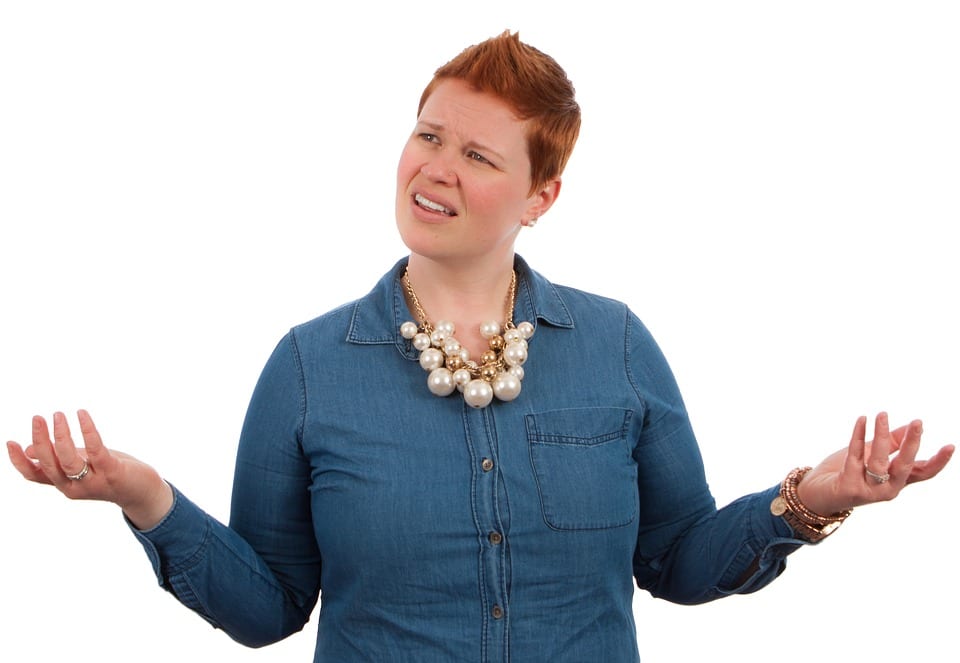
Photo Credit: Pixabay/CC0
A lot of his most well known work examines the idea of confirmation bias.
You’ve probably heard that term thrown around.
It’s basically the idea that we seek out evidence to prove or confirm what we already believe.
He created a series of tests to examine confirmation bias and humanity’s illogical nature, and we’ve got one here that we’re going to try one out right now!
This is called the Wason Selection Task.
It uses four cards.

Photo Credit: WonderWhy/YouTube
These are the only four cards involved in the scenario.
The only thing you need to know about these cards:
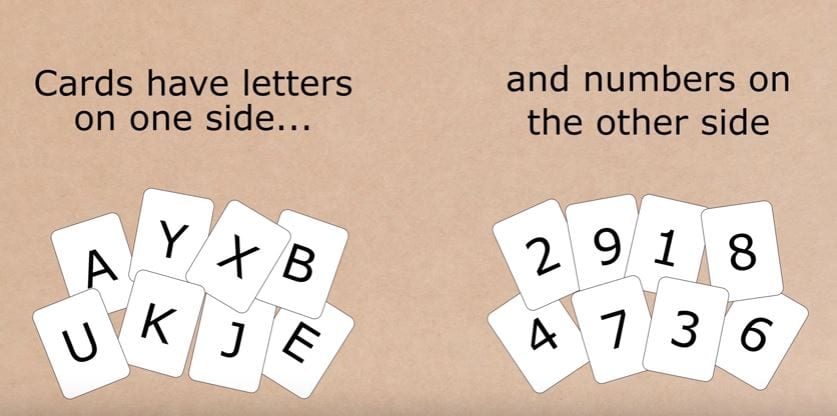
Photo Credit: WonderWhy/YouTube
Now, here’s the rule:

Photo Credit: WonderWhy/YouTube
Again, these are the four cards:

Photo Credit: WonderWhy/YouTube
And there are no others.
This really is a simple test, so I want to make sure that everything is totally clear.
You have four cards, letters on one side and numbers on the other.
The rule we are trying to test is: “If a card has a vowel on one side, it must have an even number on the other side:”

Photo Credit: WonderWhy/YouTube
Now, the question:
Which card(s) must be turned over to determine whether or not the rule is followed?
…
Think about it.
Only 4% of those who try actually get this right.
So keep that in mind, and know that I was not one of them.
Scroll back up if you have to, and meet me when you’re ready for the answer.
Welcome back!
Did you guess A and 2?
That’s what most people pick.
After all, one is a vowel, and one is an even number:
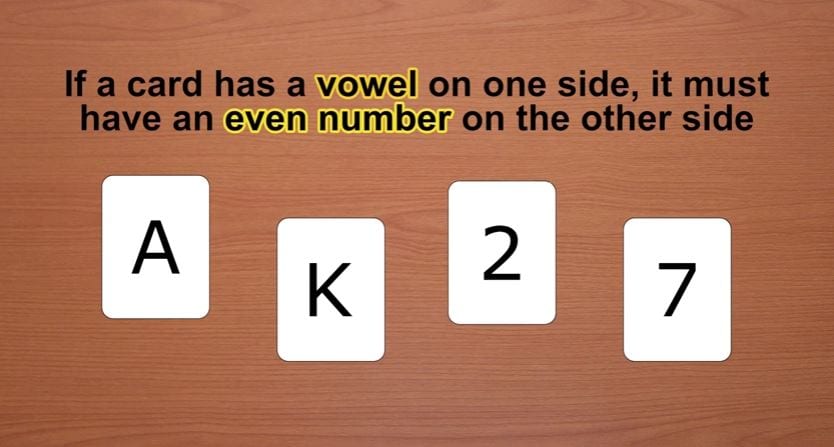
Photo Credit: WonderWhy/YouTube
Of course, that also means it’s the wrong answer, as I mentioned before that only 4% of those who try usually get this right.
The correct answer is:

Photo Credit: WonderWhy/YouTube
That’s right: A and 7.
Don’t feel bad. 96% of people don’t get this right:

Photo Credit: WonderWhy/YouTube
Before we get into each card and why it’s a good choice or isn’t, let’s examine the reason most of us pick A & 2 instead of A & 7.
Remember the rule?

Photo Credit: WonderWhy/YouTube
Did you also assume the opposite was true?
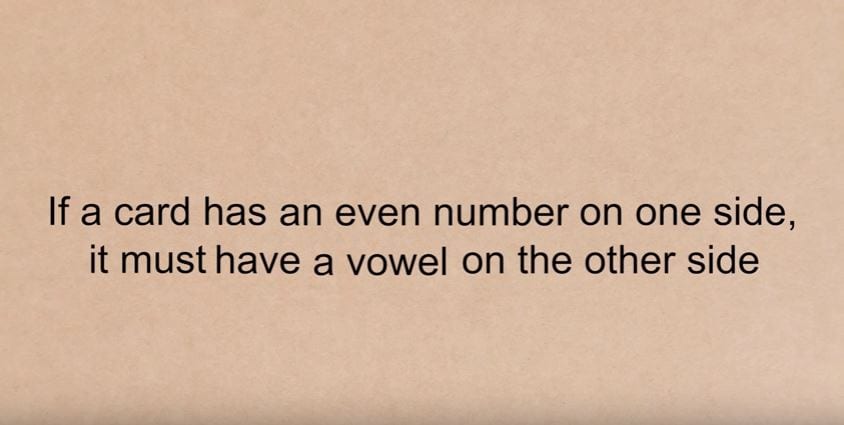
Photo Credit: WonderWhy/YouTube
Well, I’ve got bad news for you.
Nobody ever said that a card with an even number on one side would have a vowel on the other.

Photo Credit: WonderWhy/YouTube
I mean maybe you said that to yourself, but I never said that, and neither did Peter Wason.
Let’s go through the cards one at a time:
A: All of the most common answers, including the correct one, select this card. We know that if a card has a vowel on one side, then the other face must be an even number. In fact, that’s pretty much all we know.
K: There is no rule for cards with consonants that we know of. Most people seemed to get that concept and rightly ignored this card.
2: This is the dirty one that mixes most of us up. We don’t assume that K is matched with an odd number, but we do assume that even numbers have vowels, and that assumption is based in nothing. There is no rule about what’s on the other side of an even numbered card. So, there’s nothing to learn from it.
7: This might take a second to wrap your brain around, but the 7 is the ONLY other card besides the A that can help us either prove or disprove the rule. And either is fine. That’s another assumption we make: that the rule is true. We’re determining if it’s true or not. If the 7 flips over and it’s a vowel, that means that there’s a card with a vowel on one side that has an odd number on the other. That would disprove the rule.

Photo Credit: WonderWhy/YouTube
And the four cards were all chosen for a reason.
Each of them represent the four logical possibilities.
If we assume that this is an IF –> THEN statement, and IF=P and THEN=Q, this is what you end up with:

Photo Credit: WonderWhy/YouTube
So let’s get to the million-dollar question:
Why did most of us pick 2 instead of 7?
Remember that term from earlier: Confirmation Bias?
Confirmation bias is when we search out and prefer information that confirms what we already believe. Sometimes we ignore information that might disprove out preconceived notion, but often we will fail to even look for it.
Confirmation bias is essentially deductive reasoning. We start with an idea, come up with some way to prove that idea, and only look for evidence that confirms it.
Deductive reasoning is useful, but it also facilitates confirmation bias.
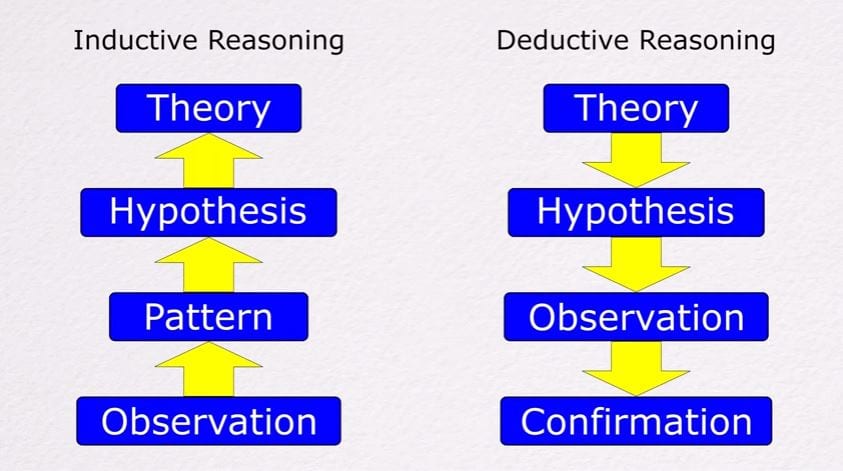
Photo Credit: WonderWhy/YouTube
Inductive reasoning is pretty much the opposite.
It starts with an observation, seeks out patterns that may exist, then forms a hypothesis to test, which becomes a theory.
You might remember those last two steps from a little thing called The Scientific Method.
Here’s the original video from WonderWhy:
If you want more, here’s another test, called the 2-4-6 task.
It was the first of Wason’s notable logic tasks, and it’s also a lot of logical fun:

